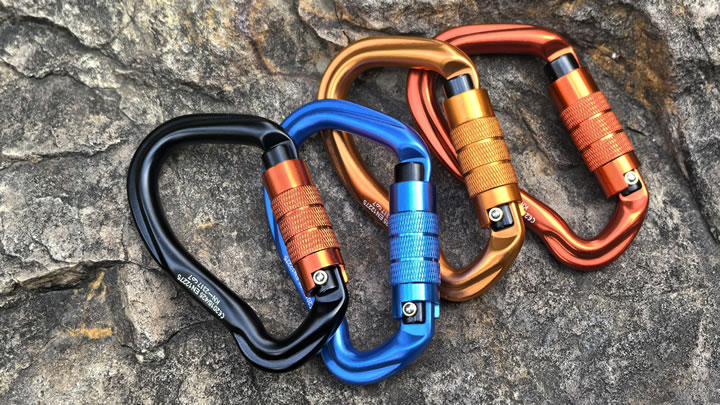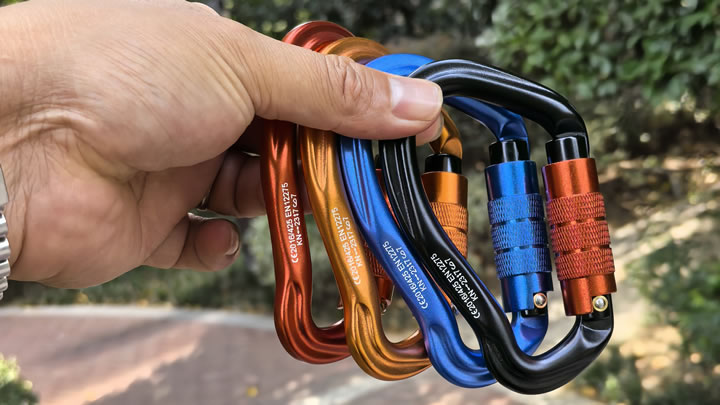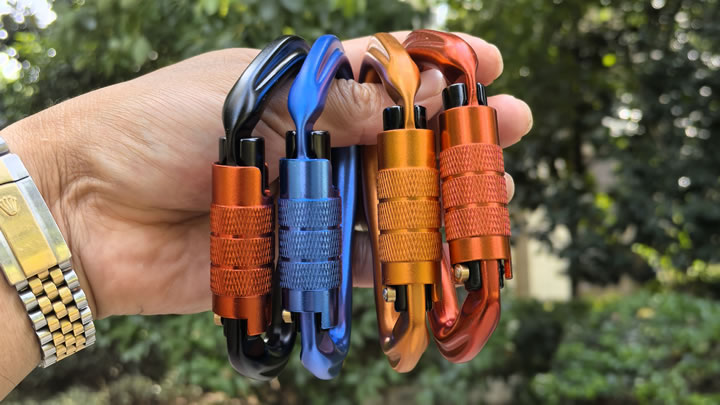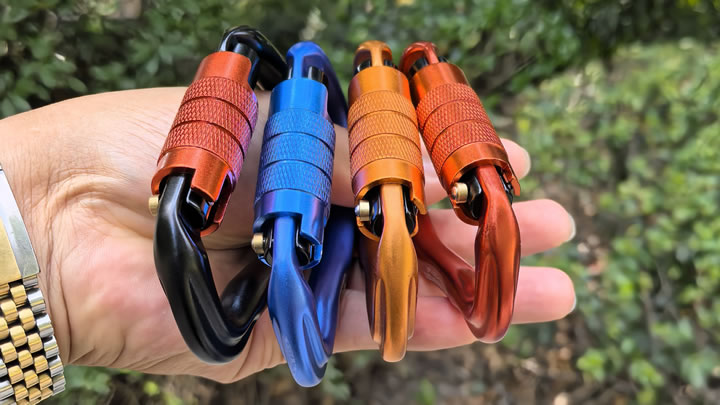What materials are climbing swivel rings made of?
Climbing swivel rings are engineered to withstand extreme forces, environmental hazards, and repetitive motion. The materials used in their construction directly impact their strength, weight, corrosion resistance, and lifespan. Whether you’re a sport climber, arborist, or rescue specialist, understanding these materials ensures you choose gear that aligns with your needs. Let’s dissect the metals and components behind this critical safety tool.

Core Materials: Strength vs. Weight
- Stainless Steel (316 Grade)Pros:Corrosion Resistance: Ideal for saltwater, humidity, or chemical exposure (e.g., coastal climbs, industrial settings).Durability: Handles heavy loads (40–50 kN) without deformation.Low Maintenance: Resists rust and pitting with minimal care.Cons: Heavier than aluminum, adding bulk to lightweight setups.Best For: Rescue operations, arboriculture, and marine environments.
- Aluminum Alloys (7075-T6 or 6061-T6)Pros:Lightweight: Up to 60% lighter than steel, ideal for sport climbing or alpine ascents.High Strength-to-Weight Ratio: Rated for 25–35 kN loads, sufficient for most recreational uses.Cons: Less corrosion-resistant; anodized coatings help but degrade over time.Best For: Sport climbing, gym use, and scenarios prioritizing weight savings.
- TitaniumPros:Strength & Weight: Combines steel-like strength with aluminum-like lightness.Corrosion Proof: Immune to rust, even in acidic or salty conditions.Cons: Expensive and less common; limited load ratings compared to steel.Best For: Technical alpine climbs or professionals needing premium gear.
Critical Components: Bearings and Coatings
- Bearings:Stainless Steel Bearings: Affordable and durable but require regular lubrication.Ceramic Bearings: Smoother rotation, less friction, and corrosion-resistant—ideal for wet environments.Sealed vs. Open: Sealed bearings block dirt but are harder to clean; open designs offer easier maintenance.
- Coatings:Anodized Aluminum: Enhances corrosion resistance and adds color-coding for gear organization.Black Oxide (Steel): Improves wear resistance and reduces glare.
Material Compatibility Warnings
- Galvanic Corrosion: Avoid mixing metals (e.g., steel swivel with aluminum carabiner) in humid environments. Dissimilar metals react, accelerating corrosion.
- Certifications: Always choose UIAA- or CE-certified materials. These standards verify the alloy’s purity and manufacturing quality.
- Temperature Limits: Aluminum weakens at high temps (~150°C+), while steel handles heat better.
Case Studies: Material Choices in Action
- Big Wall Climbing:Choice: Aluminum swivel rings reduce weight during multi-day ascents.Trade-off: Frequent inspections needed to check for wear in abrasive rock environments.
- Industrial Rope Access:Choice: Stainless steel swivels endure chemical exposure and heavy loads.Trade-off: Workers tolerate added weight for enhanced safety.
- Arborist Rigging:Choice: Titanium offers rust-proof performance for daily tree work in rain or sap.Trade-off: Higher upfront cost balances long-term durability.
How to Choose the Right Material
Ask these questions:
- Environment: Wet, salty, or chemical-heavy? → Stainless steel or titanium.
- Load Needs: Hauling heavy gear or rescue loads? → Steel’s higher kN rating.
- Frequency of Use: Daily professionals → Invest in titanium; occasional climbers → Aluminum.
- Budget: Balance initial cost against lifespan (e.g., steel lasts longer than aluminum).
Maintenance by Material
- Stainless Steel: Rinse after saltwater use; lubricate bearings annually.
- Aluminum: Clean with pH-neutral soap; avoid abrasive brushes that scratch coatings.
- Titanium: Wipe down with a damp cloth; inspect for rare stress fractures.
The Future of Swivel Ring Materials
Innovations like carbon-fiber composites and nanocoated alloys are emerging, promising lighter, stronger designs. However, traditional metals remain the gold standard for reliability.
Conclusion: Match Material to Mission
The “best” material for a climbing swivel ring depends on your specific demands. Stainless steel dominates rugged, high-load scenarios, aluminum shines in weight-sensitive climbs, and titanium bridges the gap for elite users. By prioritizing certified materials and understanding their limits, you ensure your gear performs when failure isn’t an option.
Pro Tip: Pair your swivel ring with compatible carabiners and ropes. A steel swivel won’t compensate for a worn aluminum carabiner—safety is systemic.






